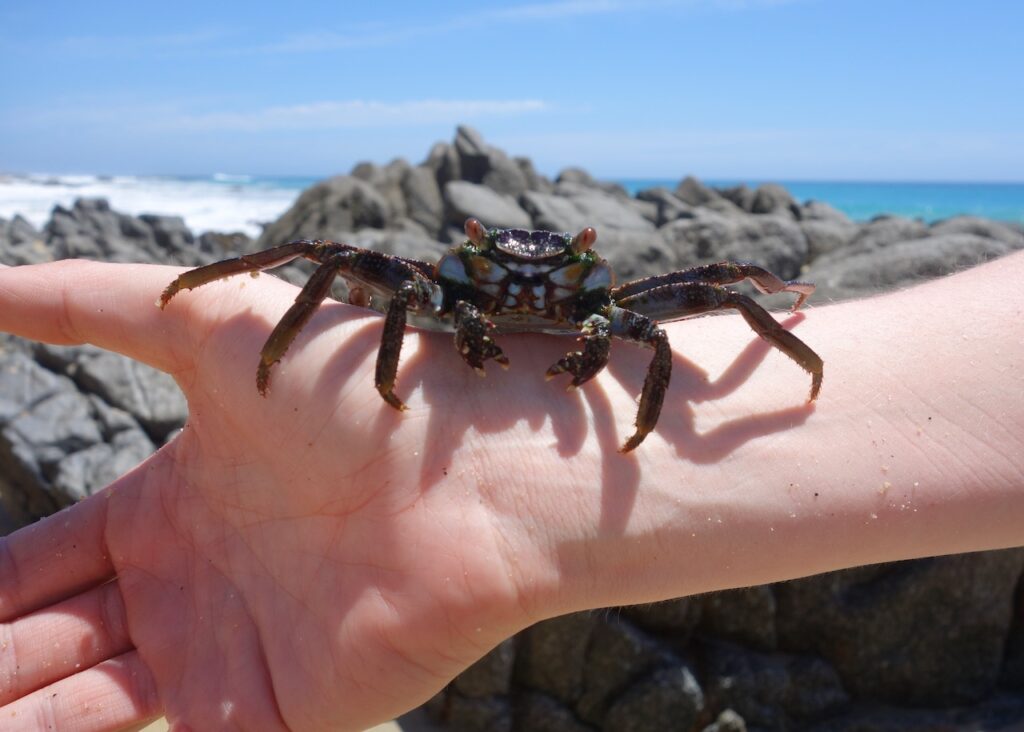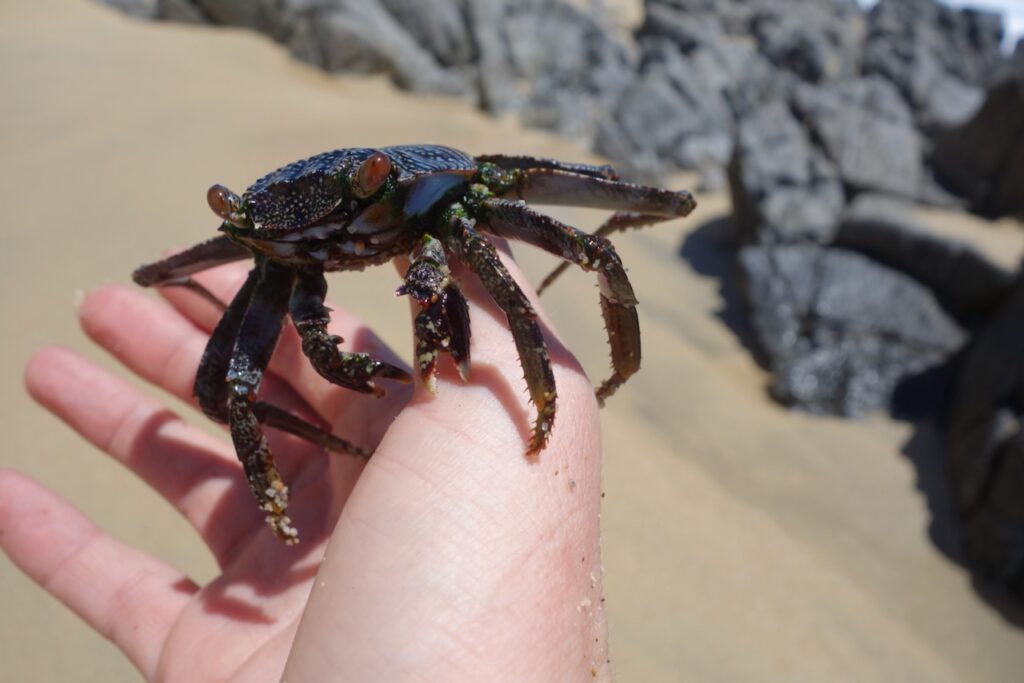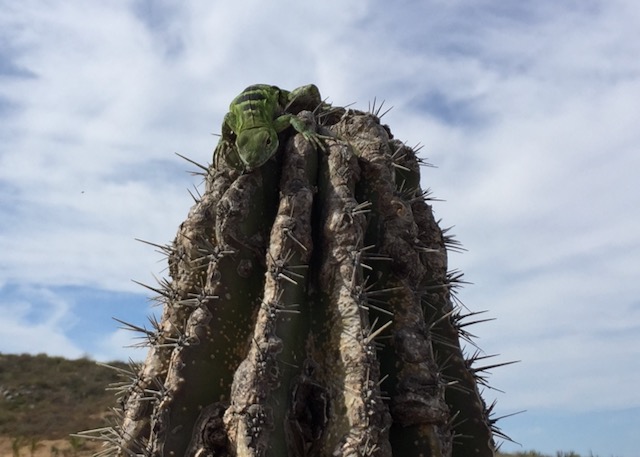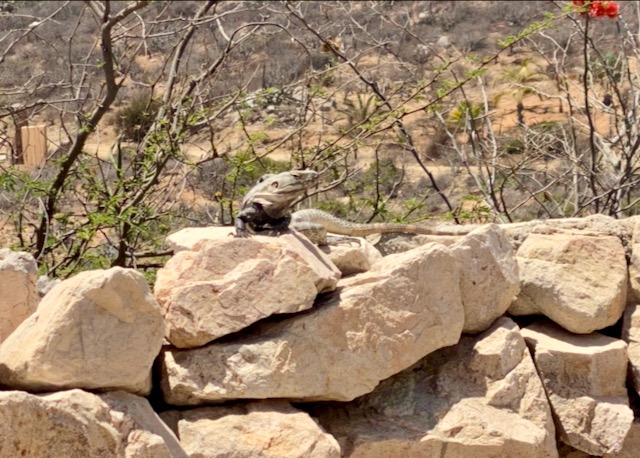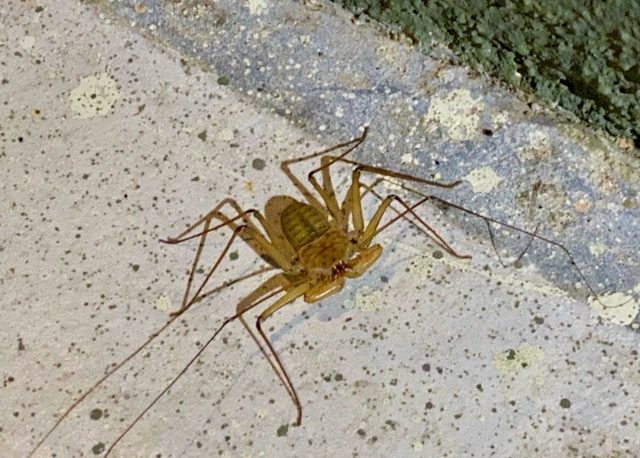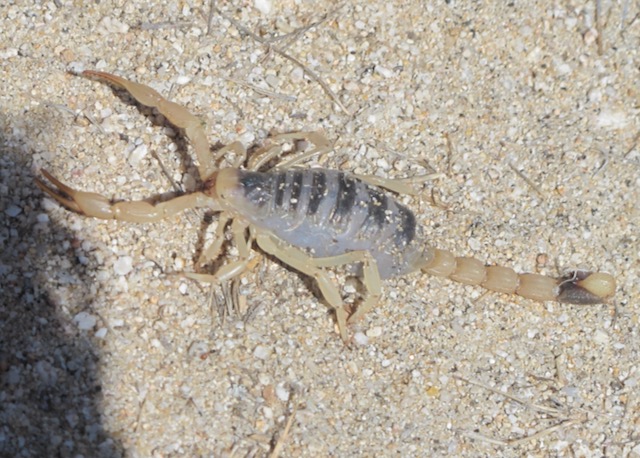Many of our jewelry designs are inspired by nature. I travel frequently down to the tip of Baja where the desert meets the Sea of Cortez. Yesterday, while reading on our ocean view deck I spotted turmoil on the oceans surface just beyond the surf. A huge school of Mobula Devil Rays were circling, pop-corning and glinting in the Baja sunshine. Although I have seen this a few times before, I am not usually down here in late April. Throughout the day, rays would jump and I would catch their diamond sparkle as they performed acrobatics.
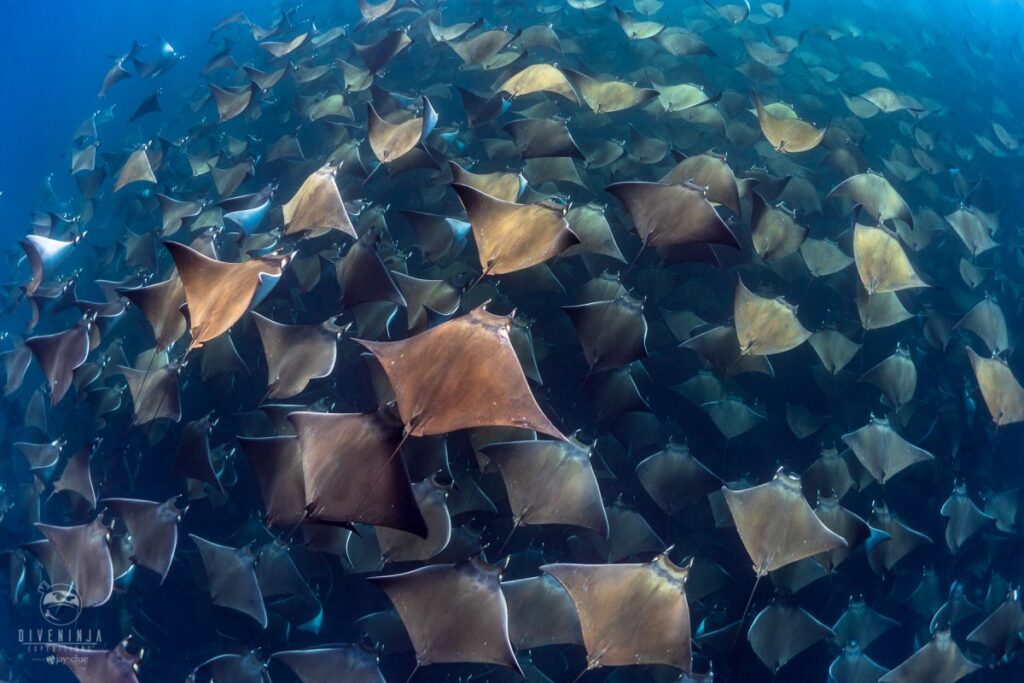
The Munk’s Devil Ray is the smallest of the Mobula genus and their cousin is the huge Manta Rays. The Devil Ray is a meter across with two frontal lobe fins that look a bit like horns, giving them their nick name. These frontal fins help to funnel water and food into their mouth. Unless you are a plankton they are harmless and during late spring and late autumn, as the currents change bringing in schools of plankton, they congregate by the tens of thousands to feed, mate and give birth. They give birth to only one pup every 3-5 years. Although they may seem plentiful, they are on the near threatened list, a causality of by-catch and of being the favorite food of the Orca.
Spiny Tail Rock Iguanas reside within the crevices of the rocky wall of our Baja casita. Whenever I’m at our Baja home, feeding papaya and bananas to our iguanas is my favorite pastime. I work on our websites, write, read and paint. I’m often distracted looking out our many windows to see what our iguanas are doing. Spike is our handsome black and tan male and about 20” long. We have five resident iguanas living in our rock condo wall. Today, I caught Spike and a smaller female, head bobbing (a mating courtship ritual) and circling each other head to tail. As far as I could see his desire was left unfulfilled and she scampered from the wall and into her rock crevice. “Not today dear…” The pesky chipmunks eat the majority of the papaya and banana and our neighborhood burros stretch their necks over the wall trying to reach the treats. I’ve spotted several juvenile Spiny Tail Iguanas as well. They are a gorgeous bright green and we named our January 2023 juvenile Squirt. I haven’t seen Squirt this April, but he or she may have matured and lost its vibrant coloring.
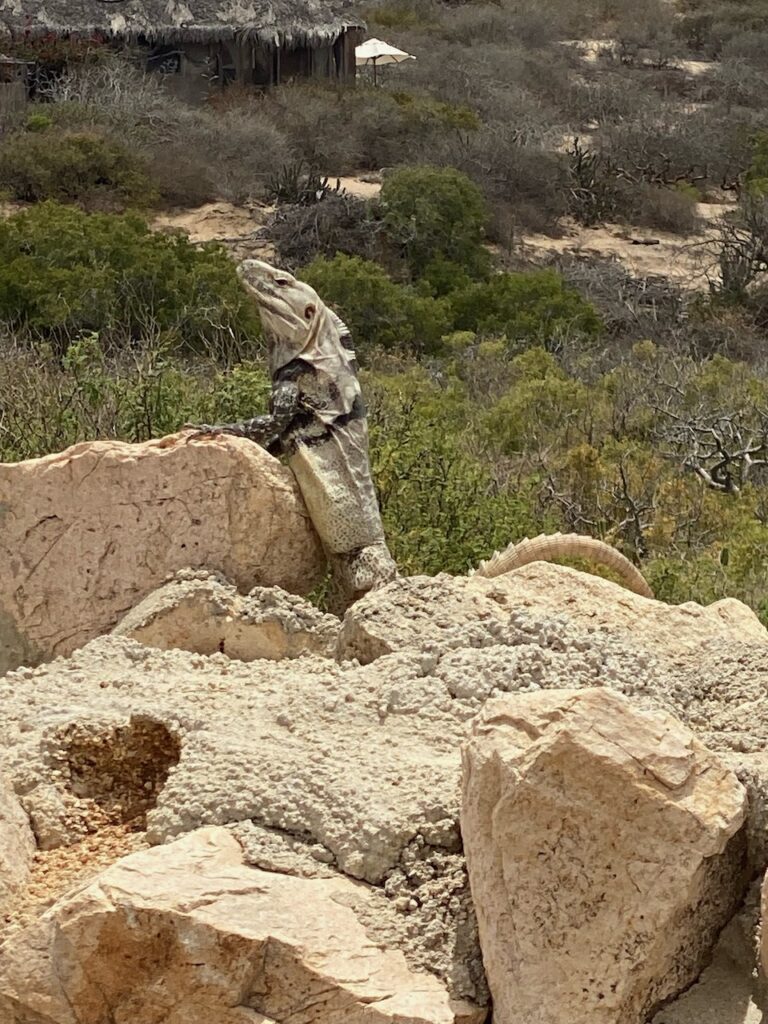
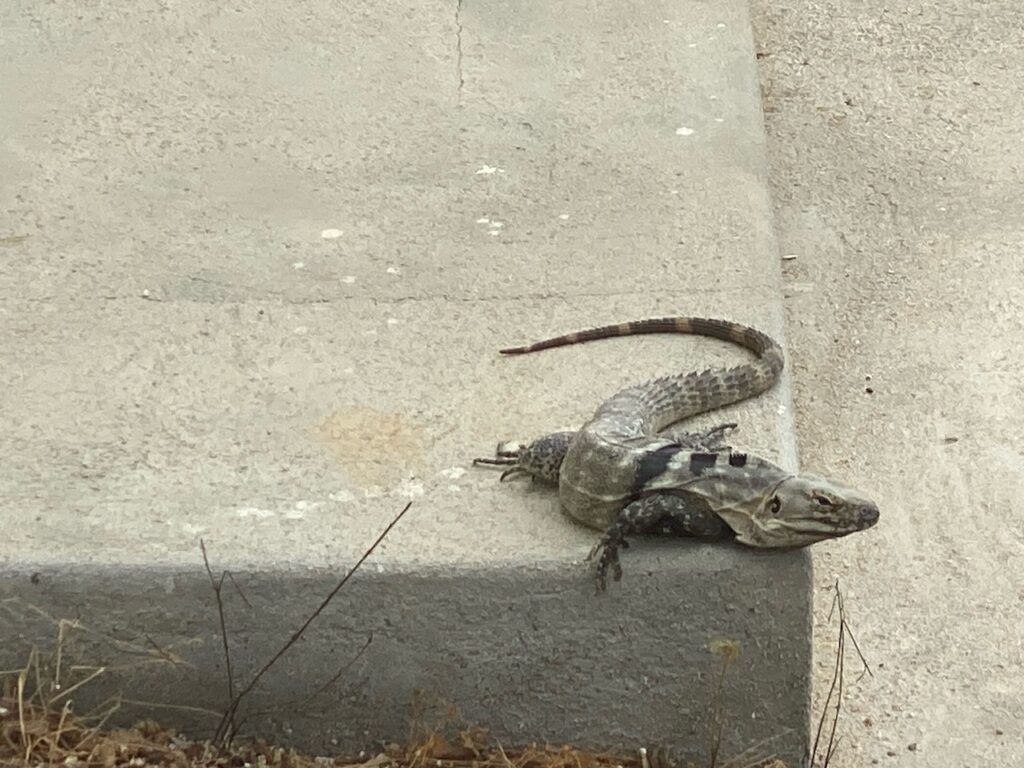
Today is May 8th, 2023. I’m starting to shut down our off the grid bungalow in Zacatitos. I looked out the window and on the rock wall and there was a lizard pile. I grabbed my binoculars and Spike was mating with Cholla. Their tails and bodies were intertwined in what I perceived to be an uncomfortable position. Spike was biting the frill on Cholla’s neck to keep her still and in position. By the time I got my camera they were finished with their lovemaking. I’m very excited to anticipate more spiny tail iguanas and verify that Cholla is female. She’s grown, but not nearly as big as Spike and until a few minutes ago, I didn’t know if she might be a young male and their head bobbing activities were territorial or romantic. These iguanas breed in the Spring and it will be 8 – 10 weeks before the female digs her nest and up to 30 eggs are laid. The eggs will hatch 75-90 days later and there is a 50.3% survival rate. I am Exited to be a great grandma in early October!
Buzzard and Crested Caracara
My favorite Baja bird is the Buzzard. They catch the thermals and I watch them soaring over our Baja bungalow. I almost always see them circling Punta Gorda, the rocky point that rises 300 feet above Zacatitos and is the west end bookend for our off grid community. Prior to the Hurricane Odile, buzzards would perch on he frame of our neighbors palapa. These majestic birds of prey are excellent scavengers and do their job well, keeping the desert free of carrion. They have a wing span of 3-4 feet and can live up to 25 years although their average lifespan is 8. They are monogamous and lay 3-4 eggs each breeding season. Pictured, perching on an adjoining cactus is a Crested Caracara, sometimes referred to as the Mexican Falcon. It frequently joins the vultures to feast on carrion and can be spotted walking on the ground as well as perching on the highest cactus.
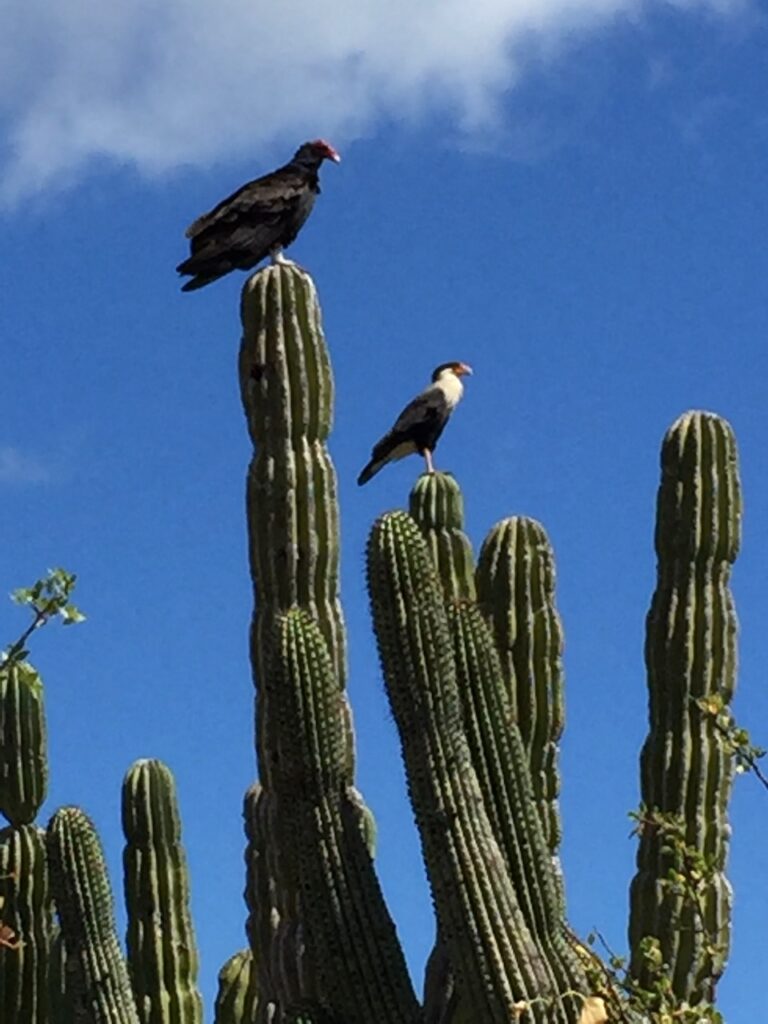
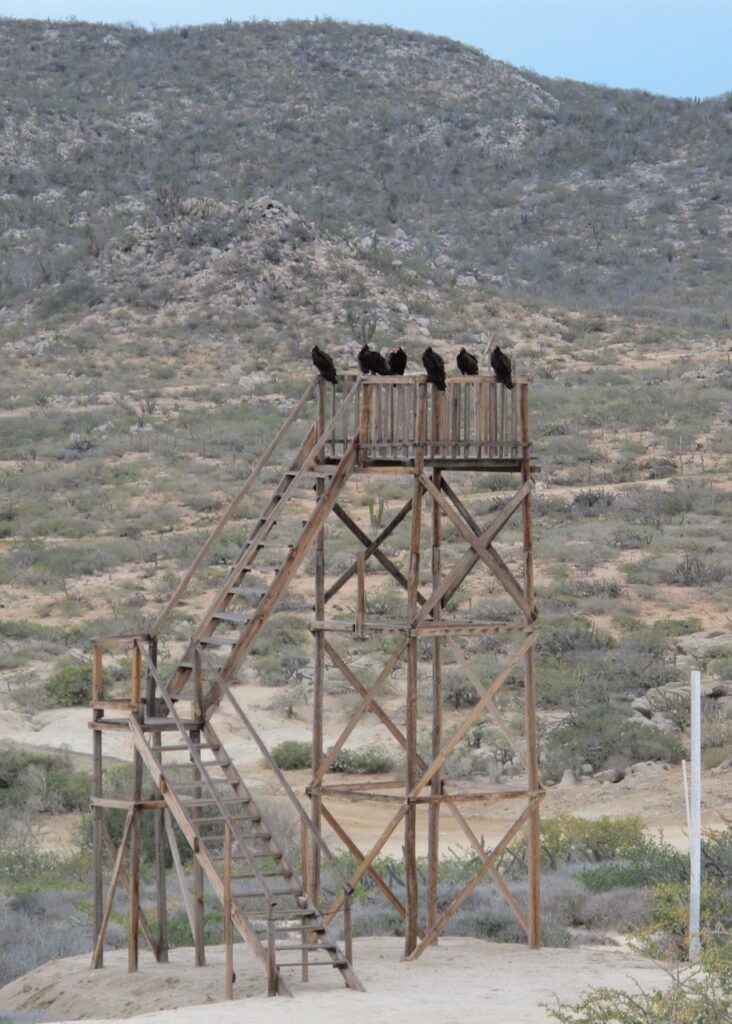
Desert Cardinals – It’s wonderful to see a splash of color against the muted colors of the Baja desert. There is actually color everywhere but you have to look a harder here to find it. Seeking out the surprises nature presents is a bit of a scavenger hunt in Baja. There are many cardinals here. The desert dwelling cardinals are similar to the Northern Cardinal but not the crimson red. In Baja their plumage is grey and orange with red highlights on face, crest, belly, wings and tail. We hear them often a part of the chorus of many distinct bird calls. Their song is high pitched with a loud clear whistle. The desert is a noisy place and geckos bark at night. (I smile to the gecko chirp in my dreams.) Unfortunately there is also the endless sound of construction as paradise is paved.
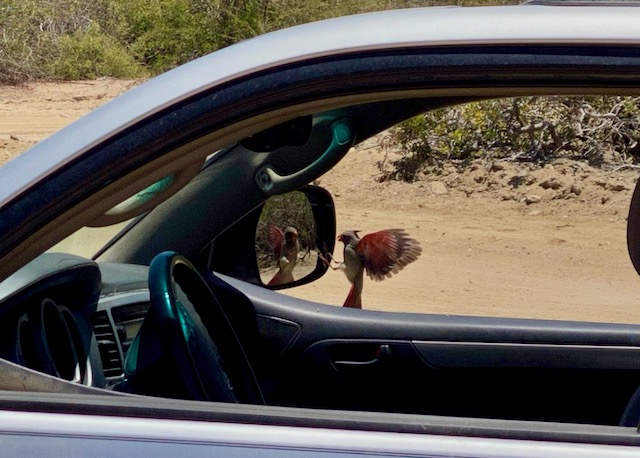
Apparently we are parking our 4-runner in one males territory. He mistakes his reflected image in our rear view mirrors and relentlessly challenges the invading male in the reflection. I’m pausing my writing to go cover the mirrors lest he have a heart attack.
Cardinals have 3 to 4 broods each year consisting of 3 to 4 eggs each. They are mostly monogamous but will choose a new mate if their mate dies. Cardinals are not on the endangered pieces list.
Scorpions and the Tailless Whip Scorpions. I see the creepy but harmless tailless scorpions often. They sometimes surprise me in our sink by coming up through the drain pipe. I slip a glass over the intruder, slide a spatula below and return it to its outside habitat. Several nights ago, one greeted us on the steps to our casita. Happily for both of us, I had a flashlight and did not step on him. We also have hundreds of tiny scorpions that hide in our rock wall, under rotted cactus skeletons and under desert rocks. The Scorpions are venomous but not aggressive and we have a mutual agreement to leave each other alone. Look don’t touch. They are easy to spot at night under the ultra violet flashlight and glow green. Going on a scorpion hunt is a fun distraction for the grandkids and the adults as well. Venomous and poisonous are very different. Many plants and animals are poisonous but only if you eat it or them. Venomous means that the bite or the sting from the creature can cause harm. Biting or stinging is usual the creatures last resort. Live and let live.
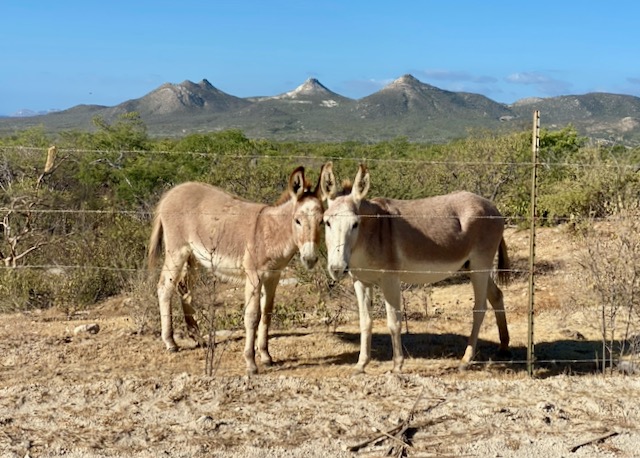
Burros – Dozens of semi wild burros roam the dirt roads of Zacatitos, Baja. ‘One Ear’ a weather beaten male has probably fathered many of our local burros. They are smart and personable and sometimes annoying. They are always asking for treats. Zacatitos would not be Zacatitos without them. Donkey verses Burro is mostly a matter of semantics but burros tend to be smaller and gray or brown with a stripe down their back. Just like an elephant, a burro never forgets.
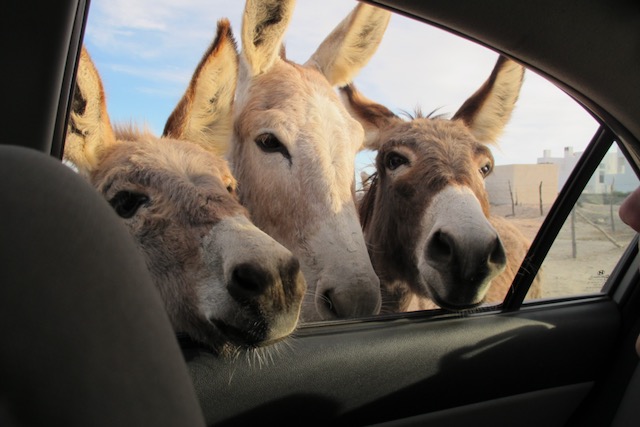
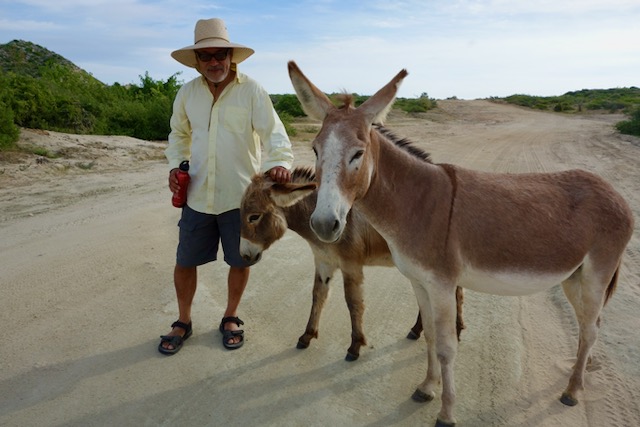
Walking Stick Insect – Walking Stick Insects are often referred to as the leaf insects, ghost or phantom bugs for their ability to camouflage. Camouflage protects them from predators but many have a secondary line of defense such as spines or toxic secretions. Here again is an example of poisonous versus venomous. They do not bite or sting but may be extremely unpleasant to eat or digest. They hide in plain sight, some even changing their coloration and predators instinctively know that they are not tasty. This wide order of insects are found on all continents except Antarctica and are most prevalent in the tropics and subtropics. Spotting one of these bugs in the Zacatitos desert is a real treat! These amazing insects come in shapes and colors that are beyond even Pixar’s and Disney’s imagination.
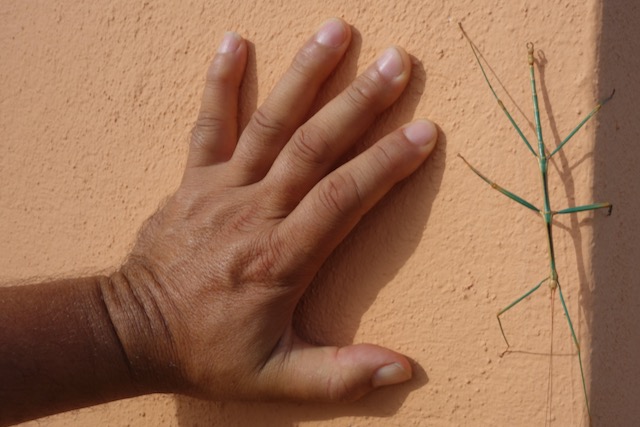
Southern Desert Horned Lizard.
We spotted this Southern Desert Horned Lizard, ‘Horny Toad’ at the Melling Ranch in Northern Baja. The ranch has been family owned for 115 years and both my grandfather and father spent considerable time there. It is an effort to drive there but Art and I visited it in 2107 making a pilgrimage to the Melling Ranch a 3 generation tradition. The ranch is the gateway to the Sierra San Pedro Martir National Park. Horned lizards have a distinctive wide and flat body and pointed spikes that protrude from the back of their heads. They are relatively small ranging between 3”-4” in length. They prey primarily on invertebrates, ants being one of their favorite treats. They are a gentle species although two of their defense mechanisms are puffing up when threatened and squirtng blood from their eyes. As a child, I had several catch and release horned lizards while my father was mapping the San Andreas fault in the California high desert. I remember being 7 years old in Castaic and hand feeding my various horned lizards squirming ants held between tweezers. After their meals, I would gently turn them over, stoke their incredibly soft bellies and they would sleep. Perhaps they were playing dead as another defense mechanism but I loved them so. I have been especially bonded to lizards since then.
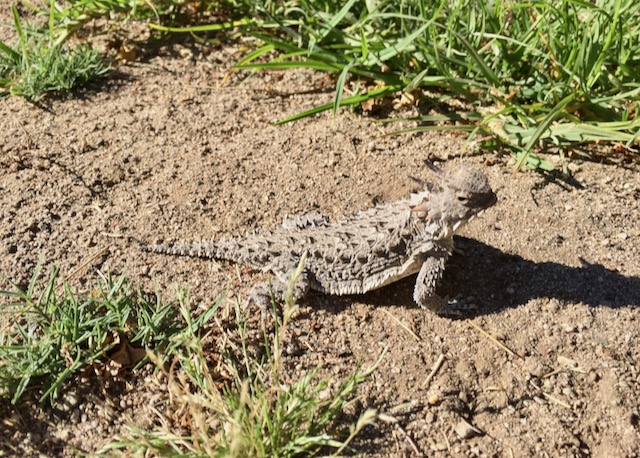
Peninsular Leaf-toed Gecko
We see these nocturnal geckos occasionally and hear their sharp bark and chirp frequently at night. I count the chirps in my dreams and it is often 9 in quick succession followed by a responding 9 chirps from a nearby gecko. I assume this is their internet dating code asking who wants to hang out, eat bugs and mate? We have many living in and around our off the grid Baja bungalow and they are efficient insect exterminators. Moths and spiders beware. As with all geckos, they have sticky toes that afford them the magical ability to effortlessly scale walls and glass and rest comfortably on the ceiling near light fixtures waiting to ambush the next unsuspecting insect. The ones I encounter are between 3” -5” long with huge bug eyes. (the better to see those bugs in the dark) They are harmless to all but insects. They are tan and brown spotted or sometimes tan and brown banded with splayed sticky toes and incredibly soft bellies. Their nightly calls lower my blood pressure and I smile in my dreams.
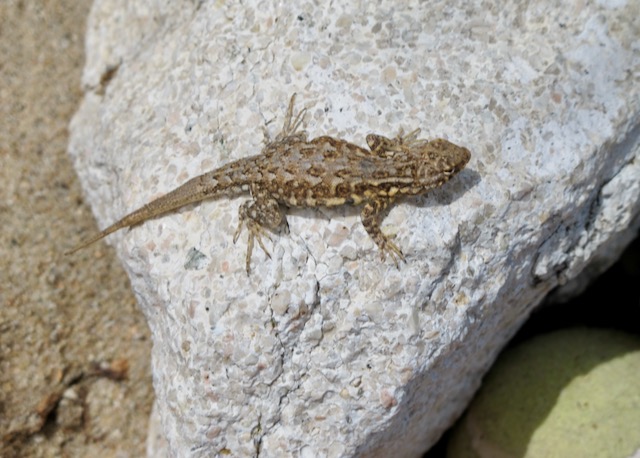
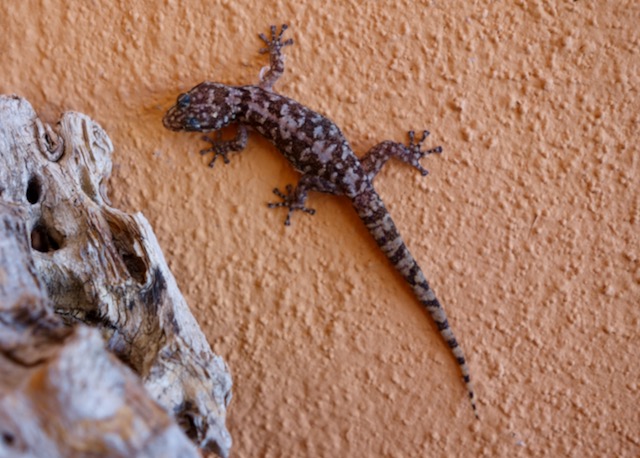
Baja Rattlesnake
The beautiful, black, brown and tan diamond pattern Baja Rattlesnake inhabits the deserts of the Baja Peninsula and many of the islands off the Pacific coast of Baja. They are venomous with a distinctive tail rattle that they will vibrate to warn creatures to keep at a distance. They prefer to be left alone and politely announce their presence should you inadvertently wander too close. Should you get close enough to gaze into their eyes, you can distinguish a viper by their vertical pupils. Few people die from a rattlesnake bite but you should seek immediate medical treatment. The bite will be painful but venom is not always injected. The dine on small rodents, lizards and centipedes and have 2- 7 young a season. An adult Baja Rattlesnake is about 3 feet long and in 2015 we were greeted by a juvenile on the bottom step of our stairway and Art carefully relocated it to the nearby brush. Neither snake or human were harmed. The same year, while walking to dinner at Zac’s we saw a 4 foot adult sinuously weave through the sand and low ground cover. Gorgeous and graceful. I managed to video this encounter but when he turned back with a warning glare and rattle, I kept my distance.
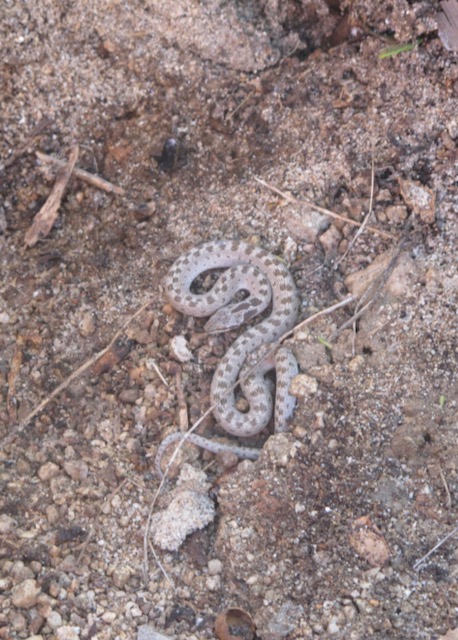
Flattie House Spider
Meet Star, our friendly flattie house spider. There are many species of these spiders throughout the world and they are referred to as a flatties because of their low profile. They are harmless and I have become attached to Star. She is nocturnal and greets me most nights on the wall of our bathroom. She is a little larger than a quarter and speckled a pretty brown and tan. She is gone in the morning and on the two nights that I didn’t see her, I was disappointed.
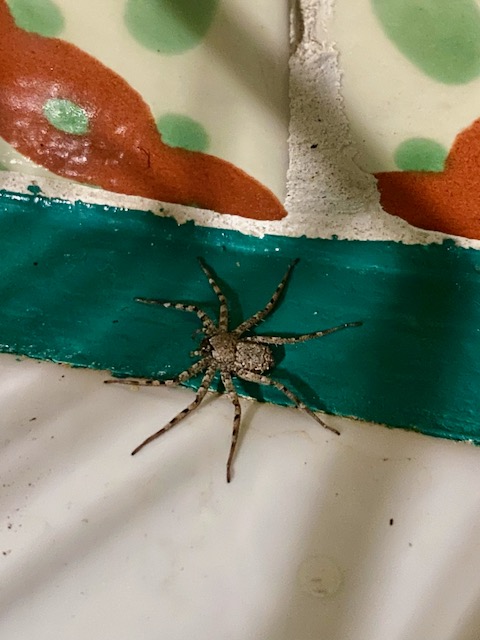
Tarantula
Although I’ve only seen a few tarantulas in Zacatitos, there are 66 species in Mexico. Recently Art and I spotted one on the road between Zacatitos and the paved highway and stopped to photograph it. After a brief photo op, it scurried under our car tire for protection and Art and I argued for some time because I would not let him drive away until I was sure she was safely off the road. They are mostly docile and their bite is no worse than a bee sting. They burrow and prey on grasshoppers, beetles and an occasional small lizard. They can live up to 25 years! Not that I want one but they make good pets and unfortunately the illegal pet and souvenir trade industry is threatening many species. For years I did Craft festivals and was horrified and disgusted to see tarantulas, scorpions, beetles and butterflies encased in plexiglass.
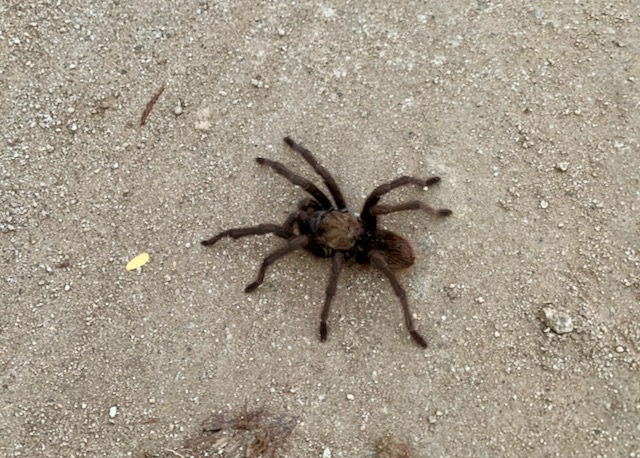
In 2014, John and I traveled to Cambodia and Myanmar. We were not on a tour but arranged for independent guides and drivers. A highlight was a stop at a huge roadside insect market. I was both horrified and fascinated as our Cambodian guide crunched spiders with gusto telling us they tasted just like potato chips. I did not indulge but naturally John nibbled on one. During the Khmer Rouge, food was scarce and insects became a staple to the Cambodian diet.
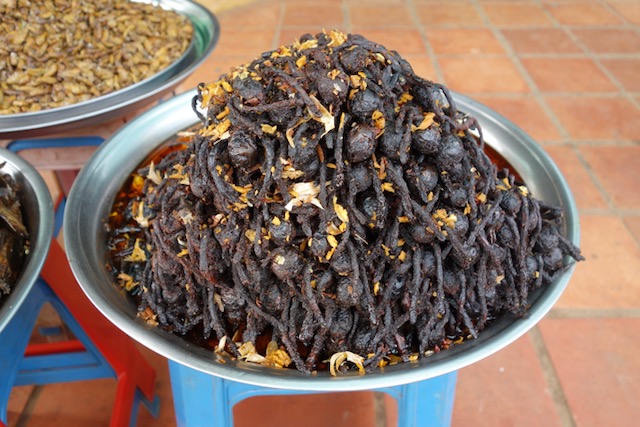
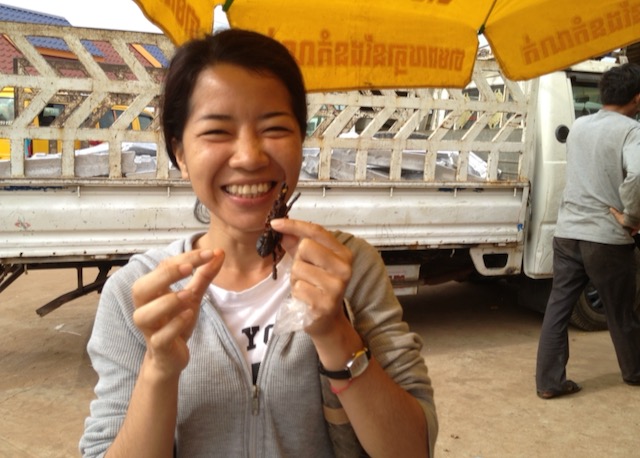
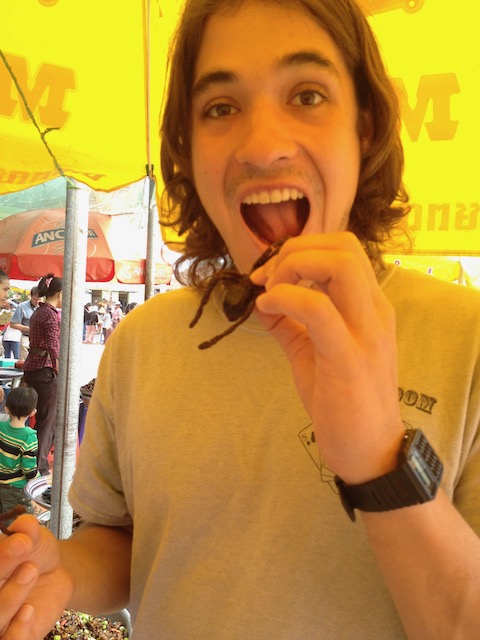
Land Hermit Crabs
When I first came to Zacatitos Baja, I would frequently find Hermit Crabs on the beach and I kidnapped one or two to take back to our Zacatitos Casita for an overnight airbnb. The next morning I would return them to the exact place on the beach where I had found them. I’m sure they didn’t enjoy their vacation but I loved them so! I named two Skuttle and Butt and they would race around our casita deck until I tucked them into a pail for the night. I know they are omnivorous and I offered them all sorts of edible treats and I collected larger shells to offer the crab whose house seemed too small. I never successfully convinced any to relocate to a larger shell. I have now learned that they can live up to 30 years, need both land, water and the companionship of a colony to thrive. They also need deep sand in which to molt. I see fewer and fewer on the beach today. That may be because I am aging and not making as many long beach walks or that paradise is being paved. Buying a hermit crab as a pet is condemning it to misery and an early death. https://www.nationalgeographic.com/animals/invertebrates/facts/hermit-crabs
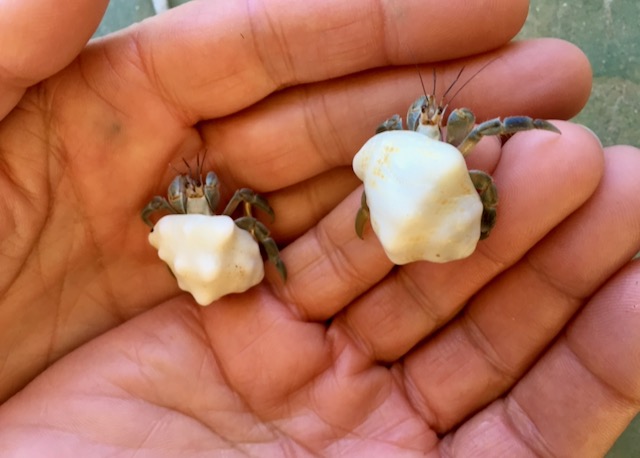
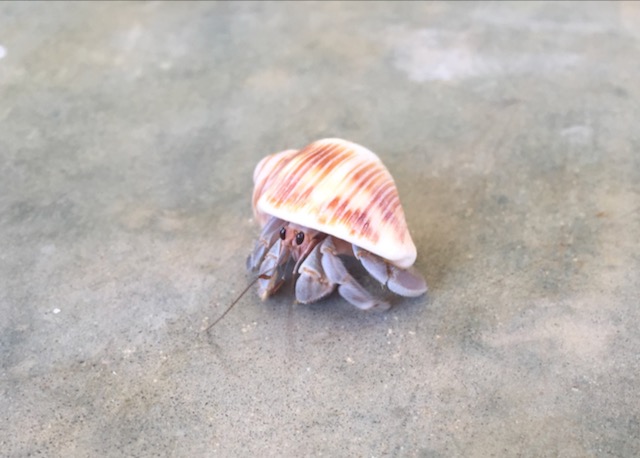
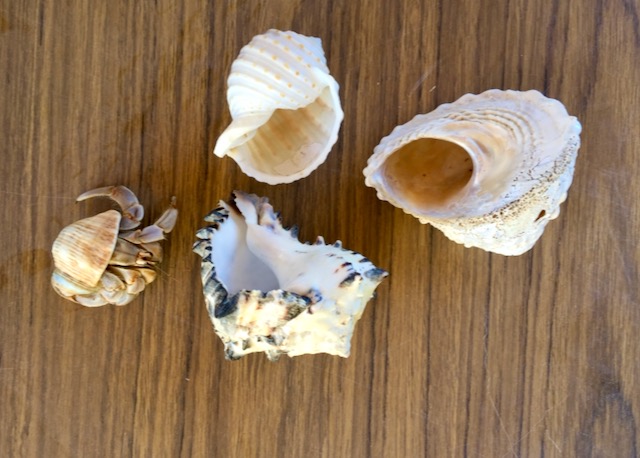
Baja Black Tail Deer
It’s May of 2013 and we have seen several of these lithe Black Tail Deer in our arroyo, mostly at sunset. The night we arrived a young buck was silhouetted in the dirt driveway to our casita. These Black Tail Deer weigh up to 225 pounds and are under 4 feet tall and less than 5 feet long. Mule Deer are much heftier and larger. Black Tail Deer have wider and longer black tails that stand out against their white rump. These deer bound quickly along the arroyo but our glimpses are fleeting and too far away for me to get a photo with my I-phone. I hope to see another this evening and get a better visual understanding. Our neighbors tell of antler sheds that they have found in the arroyos and on Punta Gorda.
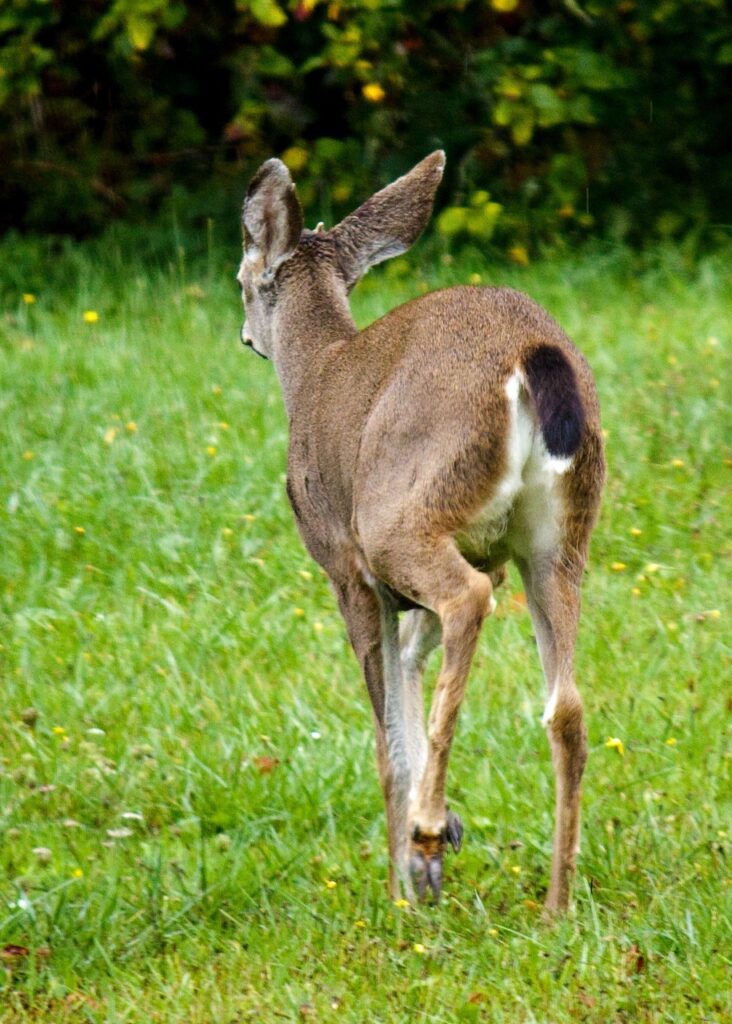
Baja Rock Crabs
There are thousands of rock crabs swarming the rocky coastline of the east cape of Baja. Apparently there are 3 types of rock crabs between Southern Baja and Washington State but our Zacatitos rock crabs fit none of the other descriptions. Ours are brown with blue dappling and in Zacatitos, the ocean-slick, quartz veined granite with is alive with crab motion. Adult crabs range between 6” – 8” across and their life span is between 5-6 years. The females have wider abdomens where they carry their eggs. The crabs grow in steps, molting their external carapace at each step. Mating takes place when the females have soft shells just after molting and a male crab often protects the molting female by holding her under his abdomen. To this human, this seems so very sweet and perhaps its natures a preamble to foreplay. The crabs scavange as well as catch unsuspecting prey.
